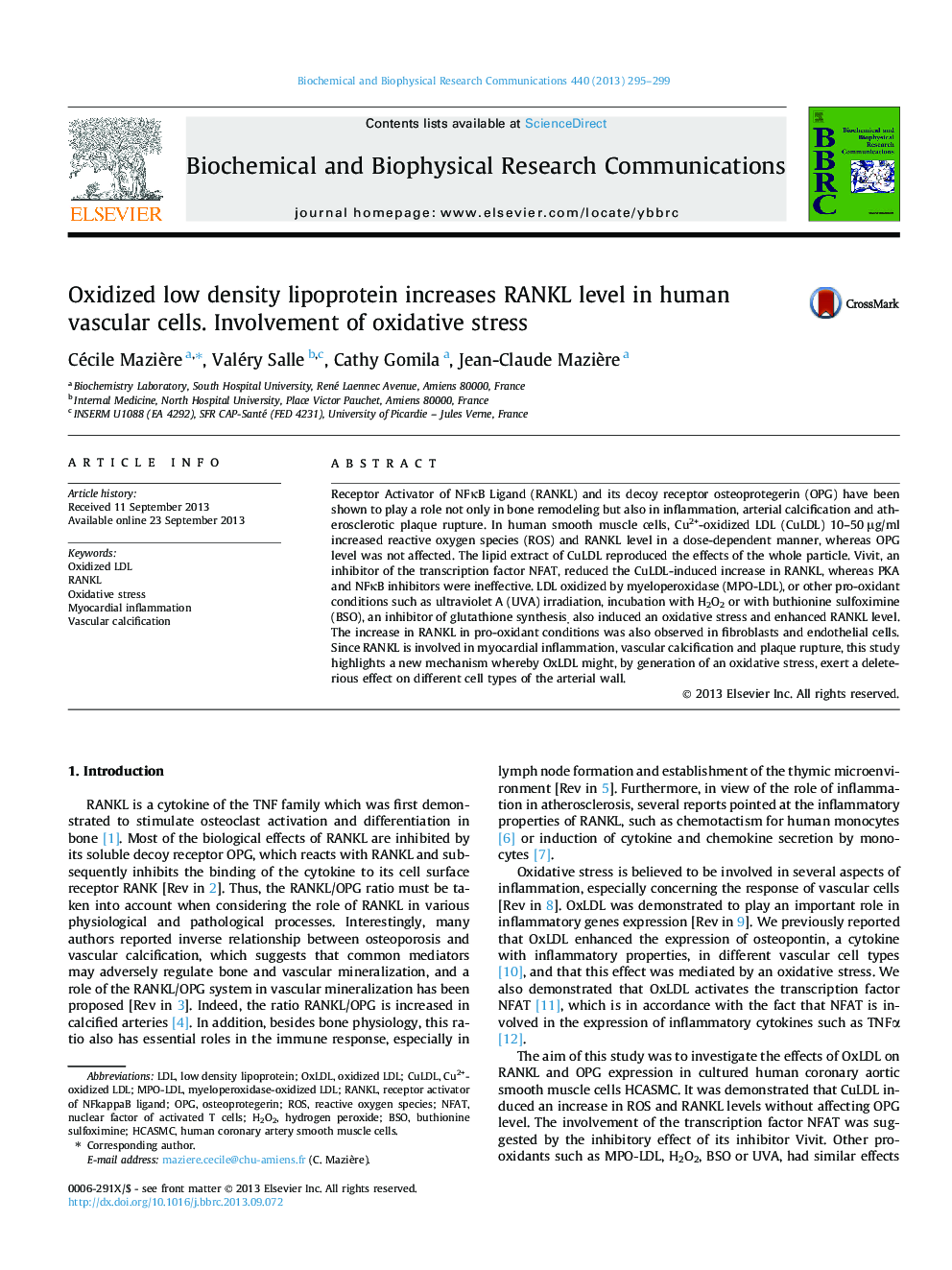| کد مقاله | کد نشریه | سال انتشار | مقاله انگلیسی | نسخه تمام متن |
|---|---|---|---|---|
| 10757757 | 1050397 | 2013 | 5 صفحه PDF | دانلود رایگان |
عنوان انگلیسی مقاله ISI
Oxidized low density lipoprotein increases RANKL level in human vascular cells. Involvement of oxidative stress
دانلود مقاله + سفارش ترجمه
دانلود مقاله ISI انگلیسی
رایگان برای ایرانیان
کلمات کلیدی
OPGhCASMCCu2+-oxidized LDLCuLDLoxLDLBSORANKLNFATOxidized LDL - LDL اکسید شدهROS - ROSHydrogen peroxide - آب اکسیژنهOsteoprotegerin - استئوپروتگرینmyocardial inflammation - التهاب قلبbuthionine sulfoximine - بوته یون سولفسیمیمOxidative stress - تنش اکسیداتیوhuman coronary artery smooth muscle cells - سلول های عضلانی عروق کرونر انسانی انسانNuclear Factor of Activated T Cells - عامل هسته ای سلول های T فعال شدهlow density lipoprotein - لیپوپروتئین چگالی کمLDL - لیپوپروتئین کم چگالی(کلسترول بد)H2O2 - هیدروژن پراکسیدVascular calcification - کلسیفیکاسیون عروقیReactive oxygen species - گونههای فعال اکسیژن
موضوعات مرتبط
علوم زیستی و بیوفناوری
بیوشیمی، ژنتیک و زیست شناسی مولکولی
زیست شیمی
پیش نمایش صفحه اول مقاله

چکیده انگلیسی
Receptor Activator of NFκB Ligand (RANKL) and its decoy receptor osteoprotegerin (OPG) have been shown to play a role not only in bone remodeling but also in inflammation, arterial calcification and atherosclerotic plaque rupture. In human smooth muscle cells, Cu2+-oxidized LDL (CuLDL) 10-50 μg/ml increased reactive oxygen species (ROS) and RANKL level in a dose-dependent manner, whereas OPG level was not affected. The lipid extract of CuLDL reproduced the effects of the whole particle. Vivit, an inhibitor of the transcription factor NFAT, reduced the CuLDL-induced increase in RANKL, whereas PKA and NFκB inhibitors were ineffective. LDL oxidized by myeloperoxidase (MPO-LDL), or other pro-oxidant conditions such as ultraviolet A (UVA) irradiation, incubation with H2O2 or with buthionine sulfoximine (BSO), an inhibitor of glutathione synthesis, also induced an oxidative stress and enhanced RANKL level. The increase in RANKL in pro-oxidant conditions was also observed in fibroblasts and endothelial cells. Since RANKL is involved in myocardial inflammation, vascular calcification and plaque rupture, this study highlights a new mechanism whereby OxLDL might, by generation of an oxidative stress, exert a deleterious effect on different cell types of the arterial wall.
ناشر
Database: Elsevier - ScienceDirect (ساینس دایرکت)
Journal: Biochemical and Biophysical Research Communications - Volume 440, Issue 2, 18 October 2013, Pages 295-299
Journal: Biochemical and Biophysical Research Communications - Volume 440, Issue 2, 18 October 2013, Pages 295-299
نویسندگان
Cécile Mazière, Valéry Salle, Cathy Gomila, Jean-Claude Mazière,